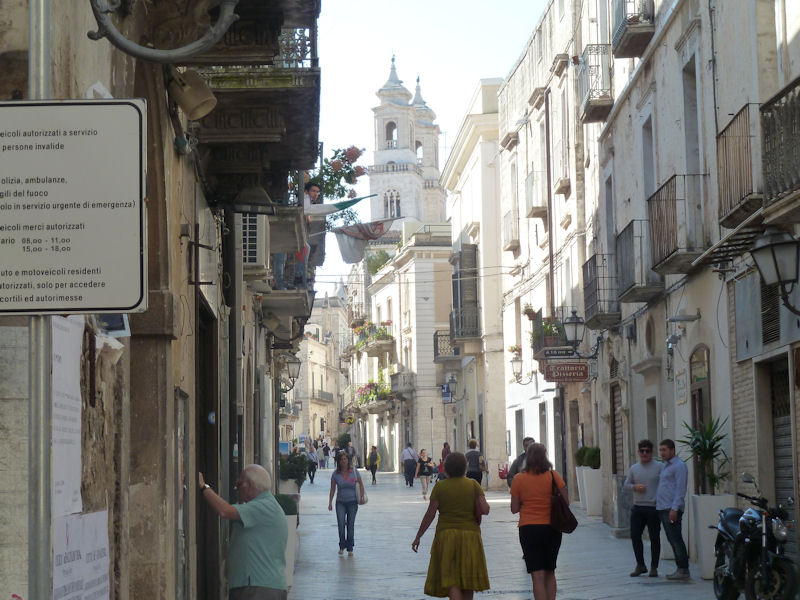It's mid-October 2011 and we've got some time off. We're all great fans of Frederick II, the Hohenstaufen Holy Roman Emperor and King of Sicily, so now's our chance.
You may not find this terribly rewarding unless you're included here, so this is a good time for casual and random browsers to turn back before they get too caught up in the sweep and majesty of the proceedings and can't let go.
'Altamura of the Good Bread'. Famous bread, and it's true -- we ate a pile of it the size of a wagon wheel for lunch in Venosa.

The area, 45 km southwest of Bari, was thriving in the Bronze Age, and enormous stone walls from the 3rd century BC are still to be seen all round the old city (Altamura='high walls'). Time and Saracens did their work, however, and the town languished until it was refounded and energized by . . . Stupor Mundi. Frederick II started work on the cathedral in 1232 and built up the walls, and the city took off. Subsequently it was ruled by the del Balzo branch of the great Orsinis and by the Farnese family, both prodigious suppliers of Popes in Rome, until in 1799 the citizens rebelled against the ruling Napoleonistas and regretted it sorely two days later.

Saint Beatrice, virgin and martyr, has surely seen better days.

Elke on the hunt for more medieval church ornamentations

Grim celebrations in the Piazza Duomo. A monument to the citizens killed when the city rebelled against the Napoleonic Parthenopeaean Republic and was badly sacked in 1799 by Cardinal Ruffo's Sanfedisti Papal Peasants.

The cathedral of Santa Maria Assunta was begun in 1232 and rebuilt after an earthquake in 1316, and has got one of the best church doorways anywhere.

All kinds of stories being told here: a closer look at the cathedral doorway.

The Cathedral of Altamura
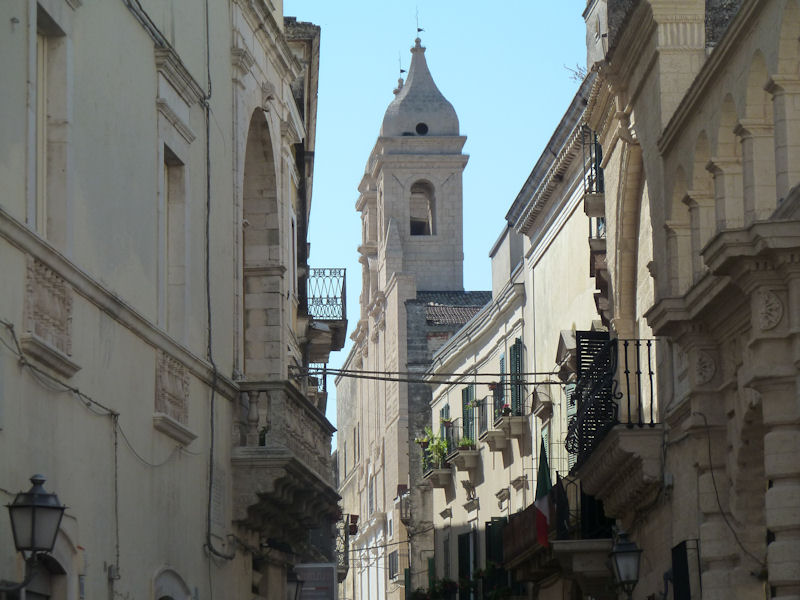
Another one, from down the street a ways

Kristin and Rob are ready for a new adventure.

-- There's one!
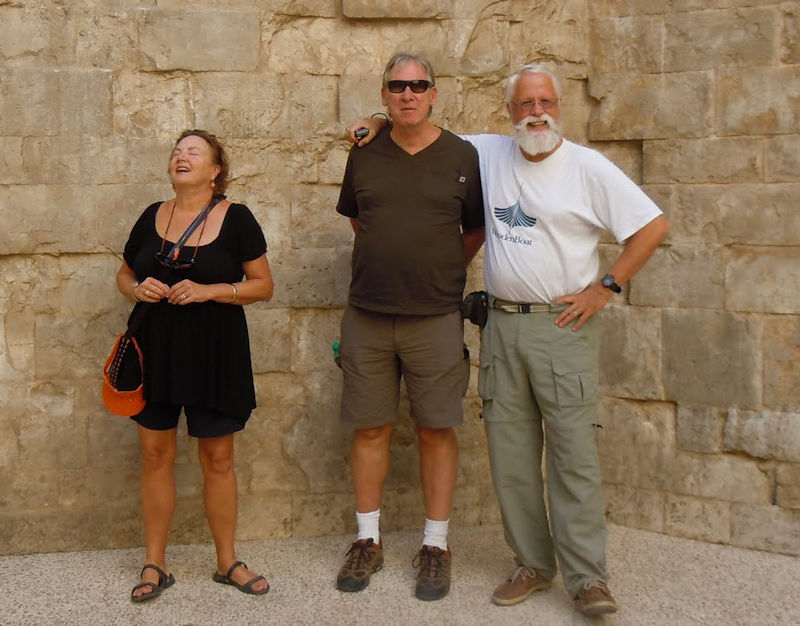
-- That was fun! (Photos by Elke)
Venosa

At the far end, that's the originally-Benedictine abbey of Saint Trinità which was opened by the Pope in 1059 and taken over by the Knights of Saint John (the Hospitallers) at the end of the 13th century. It's standing on top of the ruins of an early Christian church, which . . .

. . . was built over a Roman temple.

At more or less the same time, the Hauteville Boys from Normandy moved into the area, and the greatest of them all, Robert Guiscard, who conquered Apulia and lots more of southern Italy in the 1050s to the 1080s, is buried here -- in fact, his sarcophagus is said also to house the remains of his older brothers, the mercenaries William Iron-Arm, Drogo, and Humphrey.

The poet Horace was born here, by the way, in the 1st century BC; there's a statue somewhere round here. After the Roman Empire in the West "declined", Venosa (or Venusia) was run by Heruls, Ostrogoths, Lombards, Saracens, Byzantines, and at long last the Normans in 1041.


Scenes of the interior. There's a Roman amphitheatre round the back which supplied the stones for this lovely edifice.

We're in downtown Venosa now, looking for the castle

And carrying the lunch along

Street scene

The castle of Venosa, built by the del Balzo Orsini lords under the Aragonese in 1470
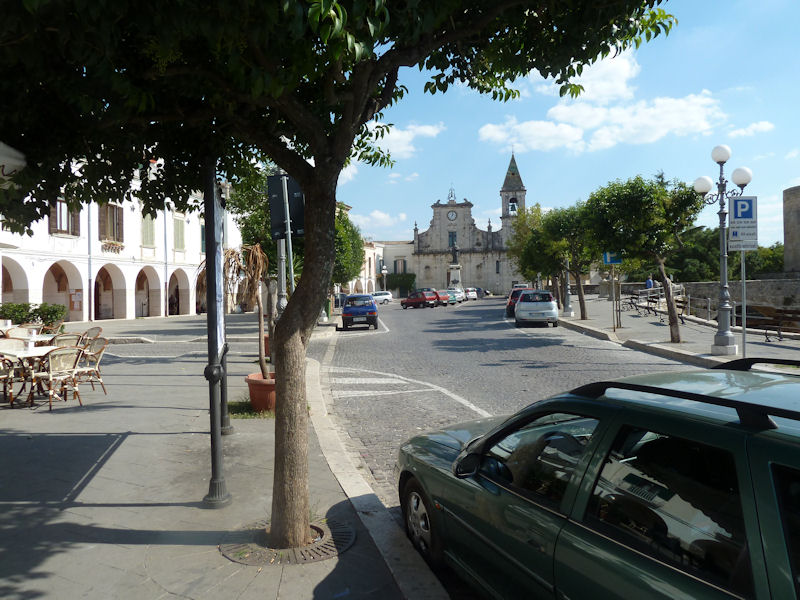
Time for lunch: the piazza in front of the castle (which is on the right), with the cathedral from the 16th century. Somewhere round here is the alleged tomb of General Marcellus, the Roman commander who was killed here by Hannibal in 208 B.C.

Within the castle of Venosa, there's a interesting museum of Italic, Greek, Roman and medieval antiquities and very clean restrooms.
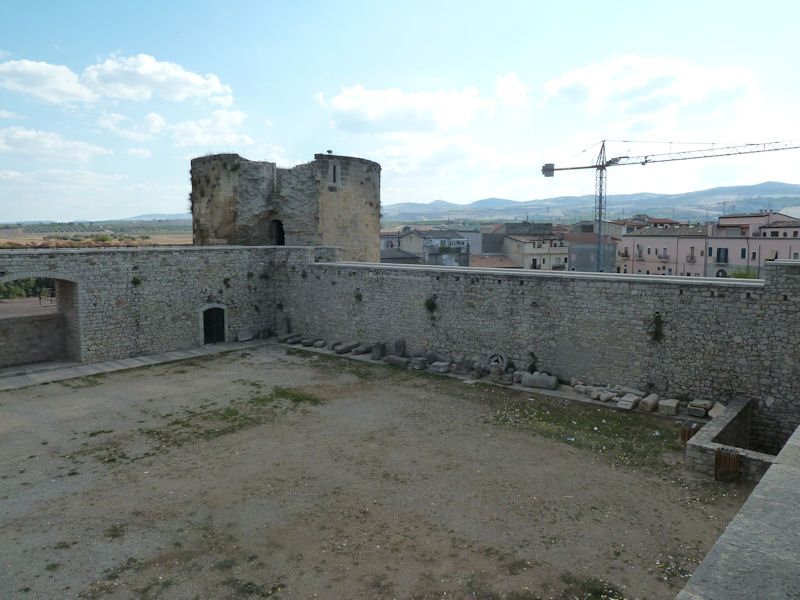
But it's otherwise a pretty uninteresting castle to the modern eye; the interior looks mainly like stableyards, or a French Foreign Legion fort in Mali.

Frederick II's son Manfred was born here, too, in 1232, by the way.
Melfi
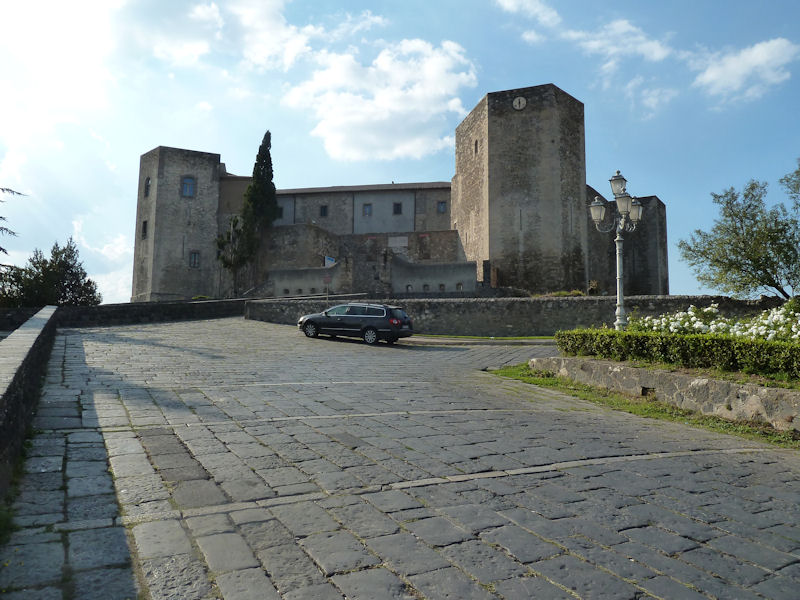
When in the mid-11th century the Hauteville Norman mercenaries began getting rumptious and holding onto territory in their own right, they set up Melfi, in the barely accessible mountains under the Volcano Vulture in the province of Basilicata, as their capital, from which they spread out to conquer Apulia and all of southern Italy, and Sicily as well.

Rob (white Wooden Boat T-shirt), Kristin, and Elke

The look out over Melfi from the castle's front door. The cathedral and other good stuff are up on the ridge to the left.

The Volcano Vulture; if it's really true that the volanco is extinct, the smoke is probably just from a forest fire.

Highlight of the castle's museum, the 2nd century sarcophagus of a Roman woman

Elke and Rob on the prince's courtyard
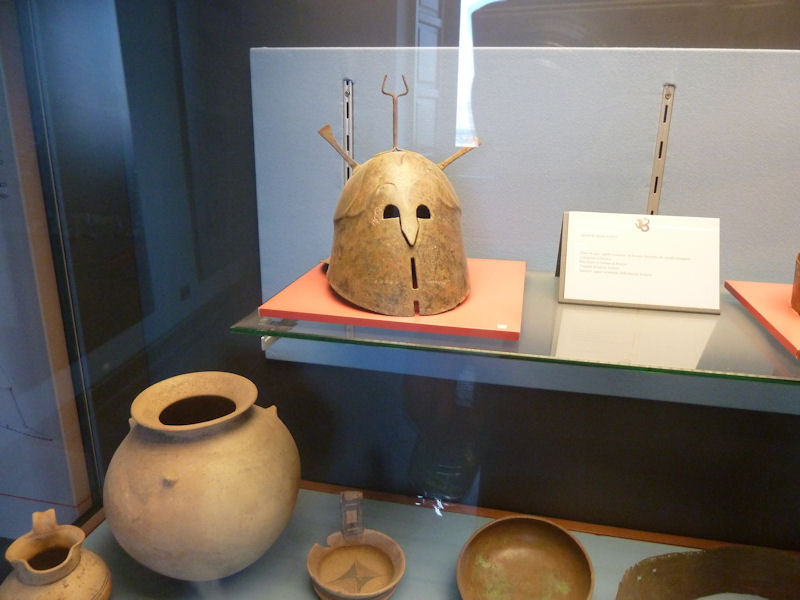
Thought-provoking helmets in the museum

Back out of this castle's front gate, and en route to another one
Lagopesole

The castle of Lagopesole to the south, built by Frederick II in 1242 and vacated by the staff at 5 p.m., 10 minutes ago.

Originally a Saracen outpost, evidently, Stupor Mundi built it as a gigantic hunting lodge and spent his last summer here. His son Manfred also spent time here, and Charles of Anjou imprisoned Manfred's wife Elena here a few years later.
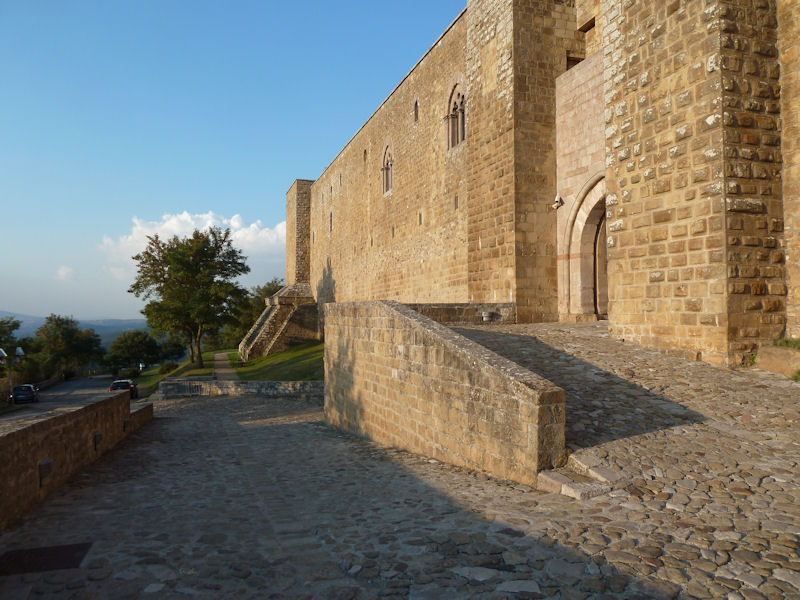
It's said to be very impressive inside, but we'll never know.

Sir Rob riding his Monty Python horse round the battlements

We're checking our watches. It's past time to head back overland on the winding, mountainy SS96bis, through Oppido Lucano at dusk, through Gravina in Puglia in the dark, and ready for a pit stop.
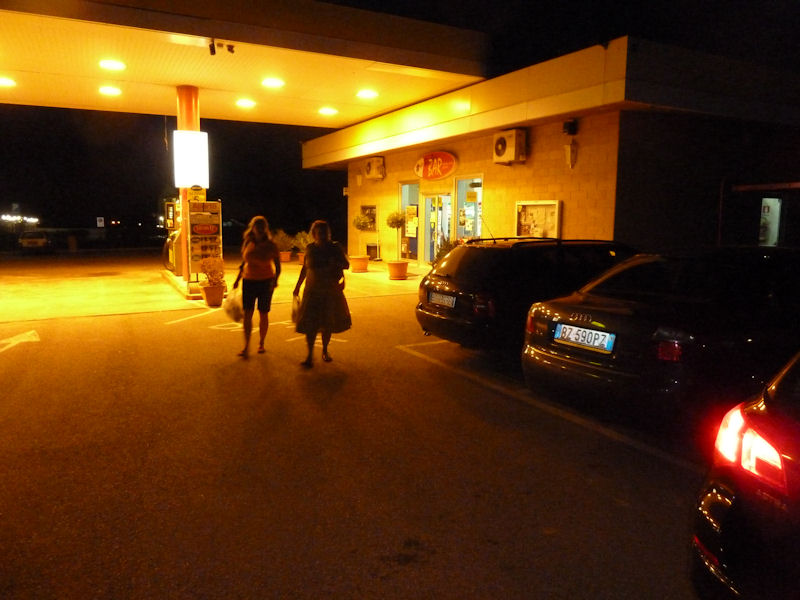
A pitstop somewhere on the back roads of Puglia

And the next morning, at the Masseria Pilapalucci
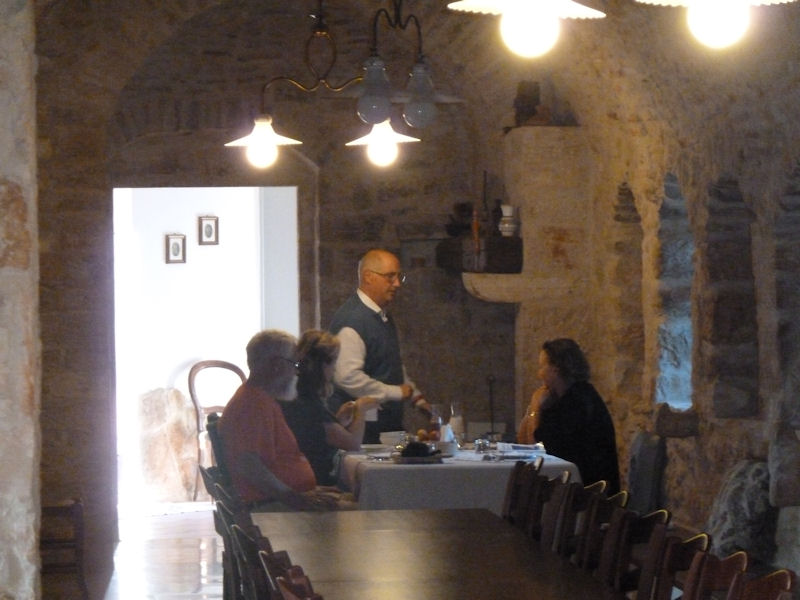
Our host is providing insightful travel details and sound assessments of Berlusconi. We're moving on southward today.

The Masseria Pilapalucci, October 2011

Cousin Rob in the orange Wooden Boats shirt
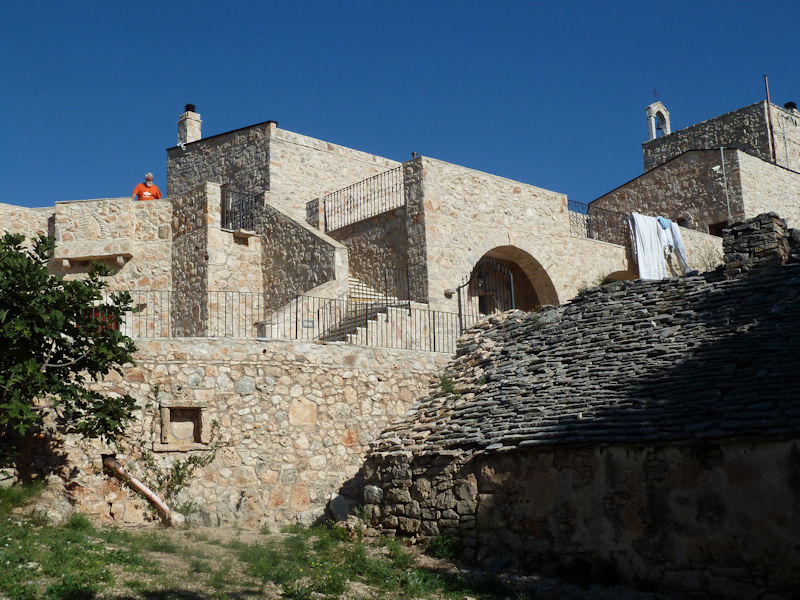
Our host saw bulldozers poised down the road as he drove out some years ago, and when he returned, half of the shed on the right had been stolen for the stones. Evoking the Brigand Era of southern Italy in the 1860s.
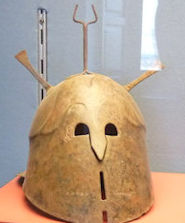 Dwight Peck's personal website
Dwight Peck's personal website